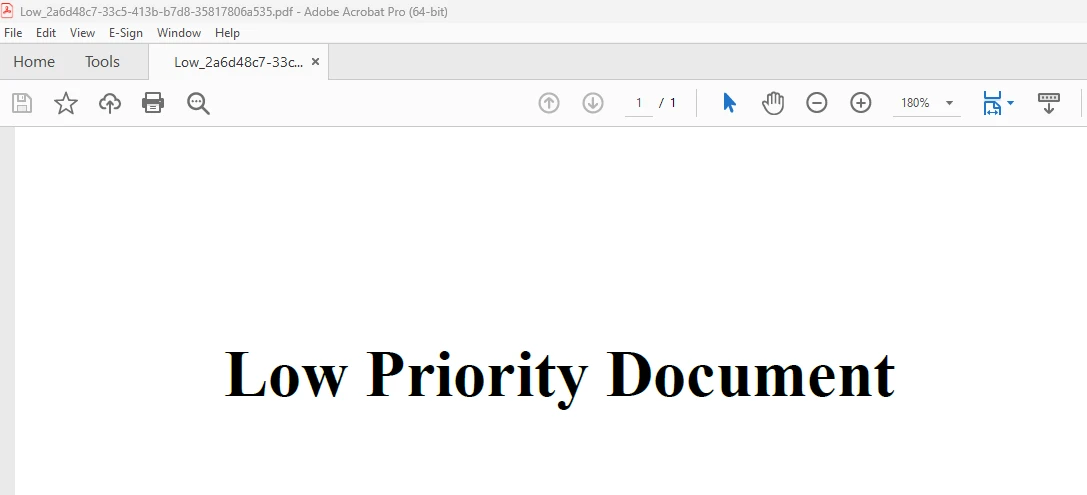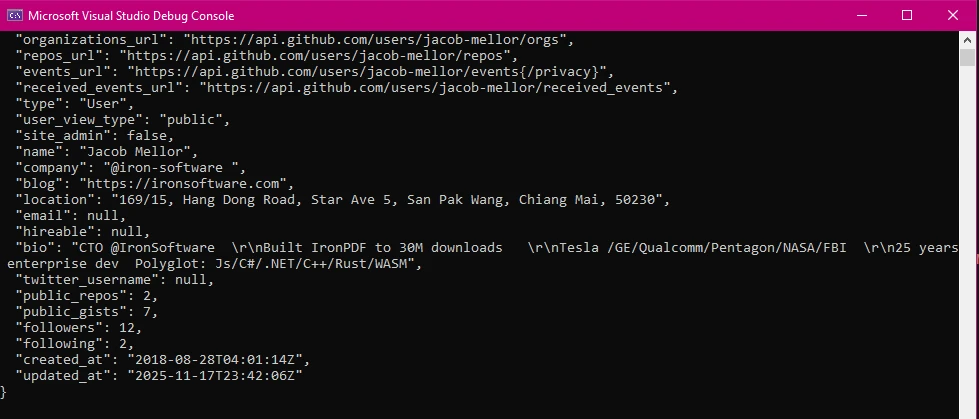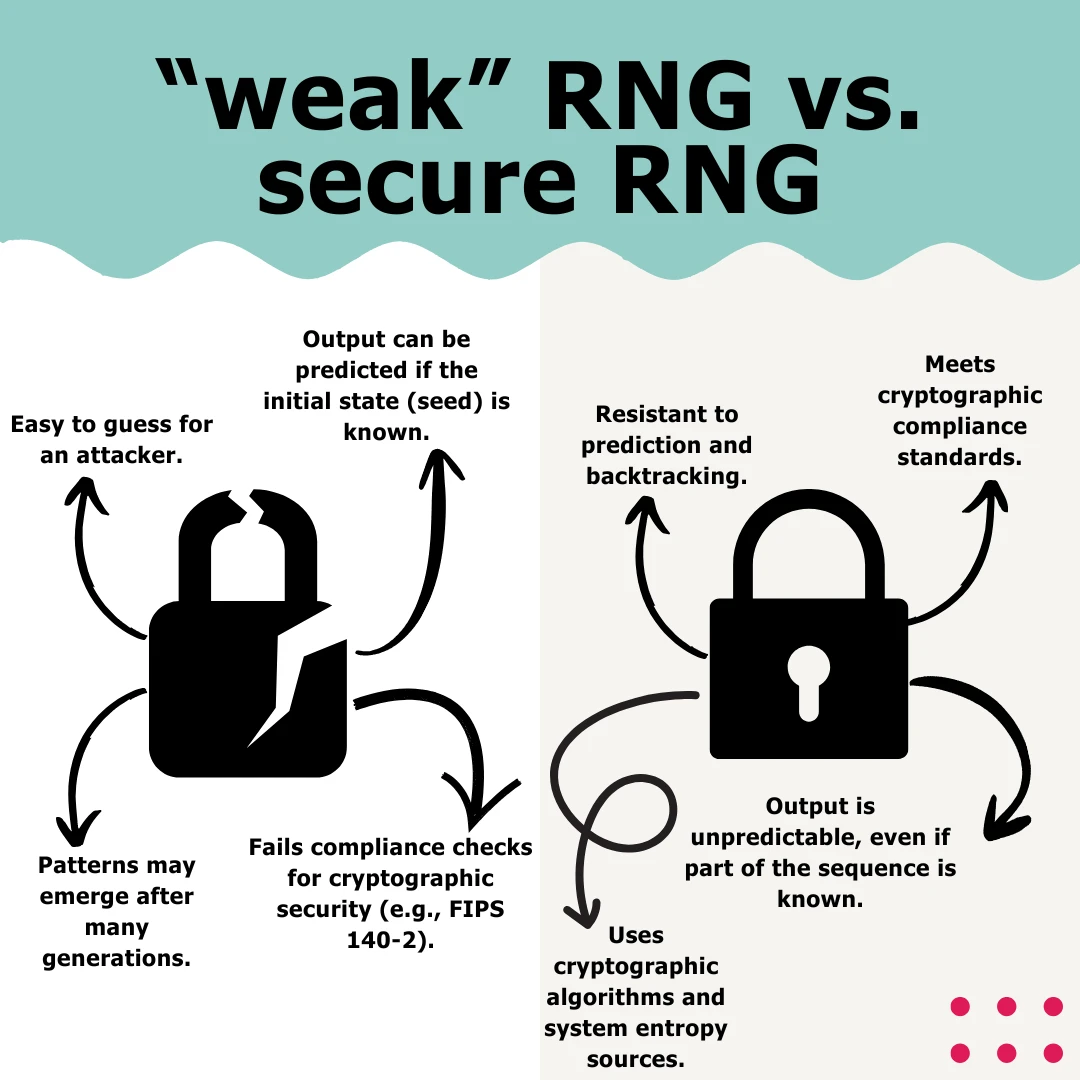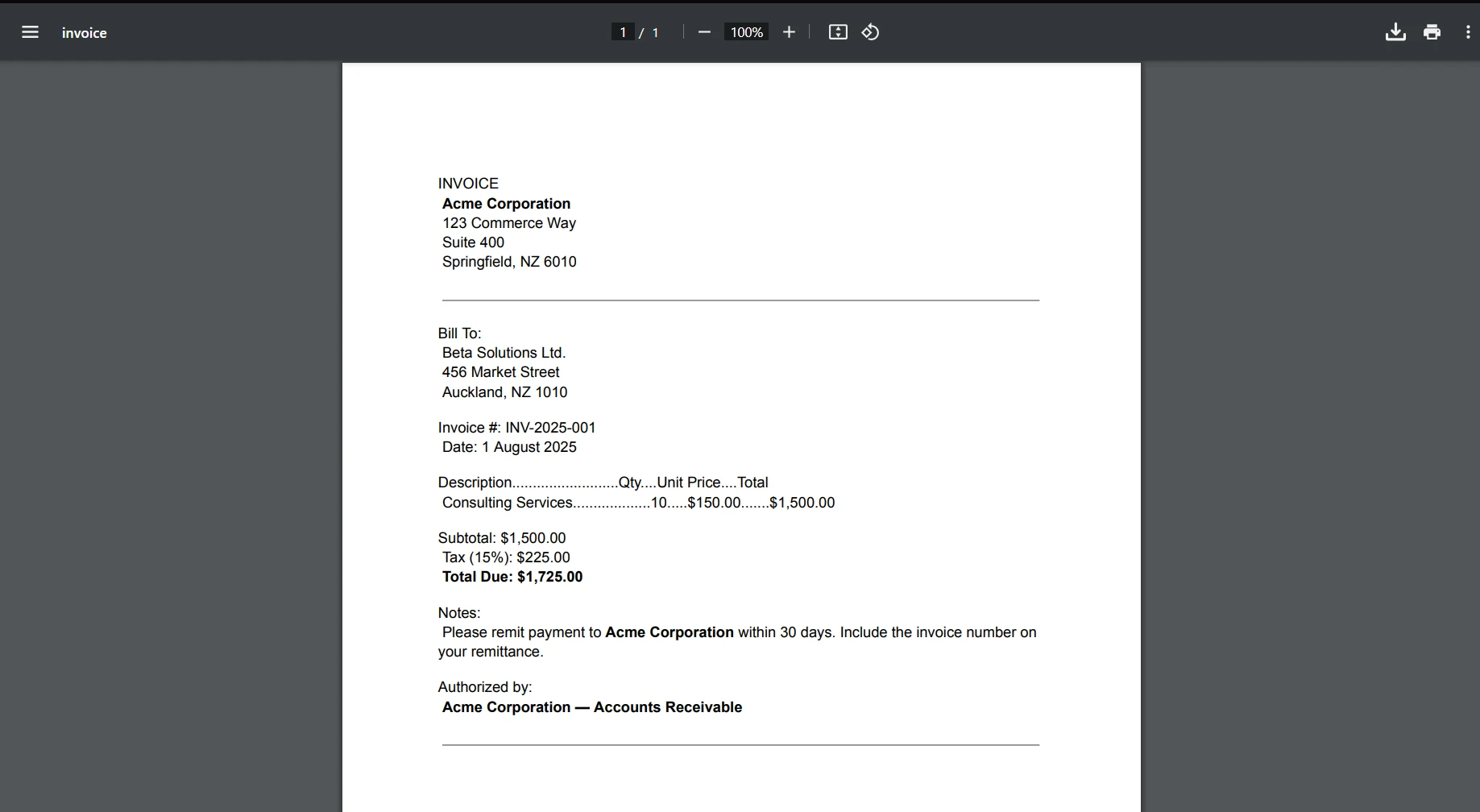C# Priority Queue (How It Works For Developers)
Programming in C# is quite flexible, and IronPDF is a strong library that makes working with documents easier, especially when creating and modifying PDF files. This post will explain the idea of a priority queue in C# and show you how to effectively utilize it with IronPDF to optimize document processing procedures. In the article, we are going to use the C# priority queue along with IronPDF.
How to Use C# Priority Queue
- Create a new C# project and create a Priority Queue object.
- Enqueue elements with priorities.
- Dequeue element with highest priority.
- Peek at the highest priority element.
- Check if the priority queue is empty.
- Execute the code and dispose of the objects.
Priority Queue
A data structure called a priority queue keeps track of several components, each of which has a priority assigned to it. The essential characteristic of a priority queue is that it allows for efficient retrieval as the element with the highest priority (or lowest priority value, depending on the implementation) is always at the front. In situations where tasks or items must be handled in a certain sequence according to their priority, priority queues are frequently utilized.
Although there isn't a PriorityQueue class in the C# standard library, you may create one yourself or utilize third-party libraries that offer this data structure. The array heap has an initial capacity, and a new heap with a bigger capacity is formed when it fills up, and we attempt to enqueue a new element. Two components are served in the same order they were queued if they share equal priority. To prevent race situations, you need to develop your unique code to handle thread safety.
When components have corresponding priorities and must be handled according to those priorities, a priority queue in C# offers several benefits.
The following are some benefits of employing a priority queue in C#
- Priority Ordering: Elements are automatically kept in order according to their priority using a priority queue. This makes priority-based processing more efficient by guaranteeing that components with higher priorities are handled before those with lower priorities.
- Customizable Comparisons: Priority queues let you use custom
comparerclasses or construct custom comparisons, which makes it possible to sort data according to intricate standards. When working with objects that have several characteristics or custom priority logic, this is helpful. - Fast Retrieval: In most cases, retrieving the element with the greatest priority—or lowest, depending on how it is implemented—requires a consistent amount of time. This is especially useful for algorithms that need to get the most important piece quickly.
Implementing a Priority Queue in C#
Let's use a binary heap to build a basic C# priority queue system. Keep in mind that you might wish to leverage pre-existing libraries or think about a more complex approach for production use.
using System;
using System.Collections.Generic;
public class PriorityQueue<T>
{
private List<T> elements;
private readonly IComparer<T> comparer;
// Constructor that sets up the priority queue with a specific comparer
public PriorityQueue(IComparer<T> comparer)
{
this.elements = new List<T>();
this.comparer = comparer;
}
// Property to get the number of elements in the queue
public int Count => elements.Count;
// Method to add an element to the priority queue
public void Enqueue(T item)
{
elements.Add(item);
int index = Count - 1;
// Bubble up the newly added item to maintain heap property
while (index > 0)
{
int parentIndex = (index - 1) / 2;
if (comparer.Compare(elements[parentIndex], elements[index]) <= 0)
break;
Swap(index, parentIndex);
index = parentIndex;
}
}
// Method to remove and return the element with the highest priority
public T Dequeue()
{
if (Count == 0)
throw new InvalidOperationException("Queue is empty.");
T front = elements[0];
elements[0] = elements[Count - 1];
elements.RemoveAt(Count - 1);
// Push down the root element to maintain heap property
int index = 0;
while (true)
{
int leftChild = 2 * index + 1;
if (leftChild >= Count)
break;
int rightChild = leftChild + 1;
int minChild = (rightChild < Count && comparer.Compare(elements[rightChild], elements[leftChild]) < 0)
? rightChild
: leftChild;
if (comparer.Compare(elements[index], elements[minChild]) <= 0)
break;
Swap(index, minChild);
index = minChild;
}
return front;
}
// Helper method to swap elements in the list
private void Swap(int i, int j)
{
T temp = elements[i];
elements[i] = elements[j];
elements[j] = temp;
}
}using System;
using System.Collections.Generic;
public class PriorityQueue<T>
{
private List<T> elements;
private readonly IComparer<T> comparer;
// Constructor that sets up the priority queue with a specific comparer
public PriorityQueue(IComparer<T> comparer)
{
this.elements = new List<T>();
this.comparer = comparer;
}
// Property to get the number of elements in the queue
public int Count => elements.Count;
// Method to add an element to the priority queue
public void Enqueue(T item)
{
elements.Add(item);
int index = Count - 1;
// Bubble up the newly added item to maintain heap property
while (index > 0)
{
int parentIndex = (index - 1) / 2;
if (comparer.Compare(elements[parentIndex], elements[index]) <= 0)
break;
Swap(index, parentIndex);
index = parentIndex;
}
}
// Method to remove and return the element with the highest priority
public T Dequeue()
{
if (Count == 0)
throw new InvalidOperationException("Queue is empty.");
T front = elements[0];
elements[0] = elements[Count - 1];
elements.RemoveAt(Count - 1);
// Push down the root element to maintain heap property
int index = 0;
while (true)
{
int leftChild = 2 * index + 1;
if (leftChild >= Count)
break;
int rightChild = leftChild + 1;
int minChild = (rightChild < Count && comparer.Compare(elements[rightChild], elements[leftChild]) < 0)
? rightChild
: leftChild;
if (comparer.Compare(elements[index], elements[minChild]) <= 0)
break;
Swap(index, minChild);
index = minChild;
}
return front;
}
// Helper method to swap elements in the list
private void Swap(int i, int j)
{
T temp = elements[i];
elements[i] = elements[j];
elements[j] = temp;
}
}Imports System
Imports System.Collections.Generic
Public Class PriorityQueue(Of T)
Private elements As List(Of T)
Private ReadOnly comparer As IComparer(Of T)
' Constructor that sets up the priority queue with a specific comparer
Public Sub New(ByVal comparer As IComparer(Of T))
Me.elements = New List(Of T)()
Me.comparer = comparer
End Sub
' Property to get the number of elements in the queue
Public ReadOnly Property Count() As Integer
Get
Return elements.Count
End Get
End Property
' Method to add an element to the priority queue
Public Sub Enqueue(ByVal item As T)
elements.Add(item)
Dim index As Integer = Count - 1
' Bubble up the newly added item to maintain heap property
Do While index > 0
Dim parentIndex As Integer = (index - 1) \ 2
If comparer.Compare(elements(parentIndex), elements(index)) <= 0 Then
Exit Do
End If
Swap(index, parentIndex)
index = parentIndex
Loop
End Sub
' Method to remove and return the element with the highest priority
Public Function Dequeue() As T
If Count = 0 Then
Throw New InvalidOperationException("Queue is empty.")
End If
Dim front As T = elements(0)
elements(0) = elements(Count - 1)
elements.RemoveAt(Count - 1)
' Push down the root element to maintain heap property
Dim index As Integer = 0
Do
Dim leftChild As Integer = 2 * index + 1
If leftChild >= Count Then
Exit Do
End If
Dim rightChild As Integer = leftChild + 1
Dim minChild As Integer = If(rightChild < Count AndAlso comparer.Compare(elements(rightChild), elements(leftChild)) < 0, rightChild, leftChild)
If comparer.Compare(elements(index), elements(minChild)) <= 0 Then
Exit Do
End If
Swap(index, minChild)
index = minChild
Loop
Return front
End Function
' Helper method to swap elements in the list
Private Sub Swap(ByVal i As Integer, ByVal j As Integer)
Dim temp As T = elements(i)
elements(i) = elements(j)
elements(j) = temp
End Sub
End ClassIronPDF
With the help of the .NET library IronPDF, programmers may use the C# language to generate, edit, and modify PDF documents. The software offers an array of tools and features to facilitate diverse operations with PDF files, including but not limited to creating PDFs from HTML, converting HTML to PDF, combining or dividing PDF documents, and appending text, photos, and annotations to pre-existing PDFs. To know more about IronPDF, refer to the IronPDF Documentation.
The main feature of IronPDF is its HTML to PDF Conversion function, which maintains layouts and styles. It converts web content into PDFs, ideal for reports, invoices, and documentation. This includes converting HTML files, URLs, and HTML strings to PDFs.
using IronPdf;
class Program
{
static void Main(string[] args)
{
// Initialize the PDF renderer
var renderer = new ChromePdfRenderer();
// 1. Convert HTML String to PDF
var htmlContent = "<h1>Hello, IronPDF!</h1><p>This is a PDF from an HTML string.</p>";
var pdfFromHtmlString = renderer.RenderHtmlAsPdf(htmlContent);
pdfFromHtmlString.SaveAs("HTMLStringToPDF.pdf");
// 2. Convert HTML File to PDF
var htmlFilePath = "path_to_your_html_file.html"; // Specify the path to your HTML file
var pdfFromHtmlFile = renderer.RenderHtmlFileAsPdf(htmlFilePath);
pdfFromHtmlFile.SaveAs("HTMLFileToPDF.pdf");
// 3. Convert URL to PDF
var url = "http://ironpdf.com"; // Specify the URL
var pdfFromUrl = renderer.RenderUrlAsPdf(url);
pdfFromUrl.SaveAs("URLToPDF.pdf");
}
}using IronPdf;
class Program
{
static void Main(string[] args)
{
// Initialize the PDF renderer
var renderer = new ChromePdfRenderer();
// 1. Convert HTML String to PDF
var htmlContent = "<h1>Hello, IronPDF!</h1><p>This is a PDF from an HTML string.</p>";
var pdfFromHtmlString = renderer.RenderHtmlAsPdf(htmlContent);
pdfFromHtmlString.SaveAs("HTMLStringToPDF.pdf");
// 2. Convert HTML File to PDF
var htmlFilePath = "path_to_your_html_file.html"; // Specify the path to your HTML file
var pdfFromHtmlFile = renderer.RenderHtmlFileAsPdf(htmlFilePath);
pdfFromHtmlFile.SaveAs("HTMLFileToPDF.pdf");
// 3. Convert URL to PDF
var url = "http://ironpdf.com"; // Specify the URL
var pdfFromUrl = renderer.RenderUrlAsPdf(url);
pdfFromUrl.SaveAs("URLToPDF.pdf");
}
}Imports IronPdf
Friend Class Program
Shared Sub Main(ByVal args() As String)
' Initialize the PDF renderer
Dim renderer = New ChromePdfRenderer()
' 1. Convert HTML String to PDF
Dim htmlContent = "<h1>Hello, IronPDF!</h1><p>This is a PDF from an HTML string.</p>"
Dim pdfFromHtmlString = renderer.RenderHtmlAsPdf(htmlContent)
pdfFromHtmlString.SaveAs("HTMLStringToPDF.pdf")
' 2. Convert HTML File to PDF
Dim htmlFilePath = "path_to_your_html_file.html" ' Specify the path to your HTML file
Dim pdfFromHtmlFile = renderer.RenderHtmlFileAsPdf(htmlFilePath)
pdfFromHtmlFile.SaveAs("HTMLFileToPDF.pdf")
' 3. Convert URL to PDF
Dim url = "http://ironpdf.com" ' Specify the URL
Dim pdfFromUrl = renderer.RenderUrlAsPdf(url)
pdfFromUrl.SaveAs("URLToPDF.pdf")
End Sub
End ClassFeatures Of IronPDF
- HTML to PDF Conversion: IronPDF can convert any type of HTML data, such as files, URLs, and HTML code strings, into PDF documents.
- PDF Generation: The C# programming language may be used to add text, graphics, and other objects programmatically to PDF documents.
- PDF Manipulation: IronPDF can modify existing PDF files and split a PDF file into several files. It may combine many PDF files into a single file.
- PDF Forms: The library is helpful in situations where form data needs to be collected and processed since it allows users to create and fill PDF forms.
- Security Features: Password and permission security are supported by IronPDF, along with PDF document encryption.
Priority Queue with IronPDF
Now that we know the fundamentals of a priority queue, let's look at how IronPDF and it can work together to process documents more quickly. Imagine a situation where you have to produce PDF documents with different priorities or levels of urgency.
Benefits of Priority Queue with IronPDF
- Dynamic Creation of Documents: You may dynamically produce PDF documents according to varying degrees of urgency or priority by utilizing a new priority queue.
- Effective Workflow Management: To maximize document-generating efficiency, the priority queue makes sure that jobs with higher priority are completed before ones with lower priority.
- Adjustable Prioritization: By changing the priority values/levels and criteria, you may quickly modify the priority queue to fit various circumstances.
- Smooth Integration: Priority-based document generation may be easily integrated into your application by using IronPDF in conjunction with the same priority queue.
- Scalability: The new priority queue expands as the program gets bigger and can handle more actions related to creating PDFs.
Below is the example code for the priority queue using IronPDF.
using IronPdf;
using System;
using System.Collections.Generic;
public class PdfGenerator
{
static void Main()
{
// Create a priority queue for PDF tasks
PriorityQueue<PdfTask> pdfTaskQueue = new PriorityQueue<PdfTask>(new PdfTaskComparer());
// Enqueue PDF tasks with different priorities
pdfTaskQueue.Enqueue(new PdfTask("High Priority Document", Priority.High));
pdfTaskQueue.Enqueue(new PdfTask("Medium Priority Document", Priority.Medium));
pdfTaskQueue.Enqueue(new PdfTask("Low Priority Document", Priority.Low));
// Process PDF tasks in order of their priority
while (pdfTaskQueue.Count > 0)
{
PdfTask nextTask = pdfTaskQueue.Dequeue();
GeneratePdf(nextTask);
}
}
// Generate PDF document using IronPDF
static void GeneratePdf(PdfTask pdfTask)
{
// Create a new PDF document using IronPDF
IronPdf.HtmlToPdf renderer = new IronPdf.HtmlToPdf();
PdfDocument pdf = renderer.RenderHtmlAsPdf($"<h1>{pdfTask.Content}</h1>");
// Save the PDF to a file
string pdfFilePath = $"{pdfTask.Priority}_{Guid.NewGuid()}.pdf";
pdf.SaveAs(pdfFilePath);
// Display confirmation message
Console.WriteLine($"PDF generated successfully. File saved at: {pdfFilePath}");
}
}
// Class to define a PDF task
public class PdfTask
{
public string Content { get; }
public Priority Priority { get; }
public PdfTask(string content, Priority priority)
{
Content = content;
Priority = priority;
}
}
// Enum to define priority levels
public enum Priority
{
Low,
Medium,
High
}
// Comparer to compare PDF tasks based on their priority
public class PdfTaskComparer : IComparer<PdfTask>
{
public int Compare(PdfTask x, PdfTask y)
{
// Prioritize higher priority tasks
return y.Priority.CompareTo(x.Priority);
}
}using IronPdf;
using System;
using System.Collections.Generic;
public class PdfGenerator
{
static void Main()
{
// Create a priority queue for PDF tasks
PriorityQueue<PdfTask> pdfTaskQueue = new PriorityQueue<PdfTask>(new PdfTaskComparer());
// Enqueue PDF tasks with different priorities
pdfTaskQueue.Enqueue(new PdfTask("High Priority Document", Priority.High));
pdfTaskQueue.Enqueue(new PdfTask("Medium Priority Document", Priority.Medium));
pdfTaskQueue.Enqueue(new PdfTask("Low Priority Document", Priority.Low));
// Process PDF tasks in order of their priority
while (pdfTaskQueue.Count > 0)
{
PdfTask nextTask = pdfTaskQueue.Dequeue();
GeneratePdf(nextTask);
}
}
// Generate PDF document using IronPDF
static void GeneratePdf(PdfTask pdfTask)
{
// Create a new PDF document using IronPDF
IronPdf.HtmlToPdf renderer = new IronPdf.HtmlToPdf();
PdfDocument pdf = renderer.RenderHtmlAsPdf($"<h1>{pdfTask.Content}</h1>");
// Save the PDF to a file
string pdfFilePath = $"{pdfTask.Priority}_{Guid.NewGuid()}.pdf";
pdf.SaveAs(pdfFilePath);
// Display confirmation message
Console.WriteLine($"PDF generated successfully. File saved at: {pdfFilePath}");
}
}
// Class to define a PDF task
public class PdfTask
{
public string Content { get; }
public Priority Priority { get; }
public PdfTask(string content, Priority priority)
{
Content = content;
Priority = priority;
}
}
// Enum to define priority levels
public enum Priority
{
Low,
Medium,
High
}
// Comparer to compare PDF tasks based on their priority
public class PdfTaskComparer : IComparer<PdfTask>
{
public int Compare(PdfTask x, PdfTask y)
{
// Prioritize higher priority tasks
return y.Priority.CompareTo(x.Priority);
}
}Imports IronPdf
Imports System
Imports System.Collections.Generic
Public Class PdfGenerator
Shared Sub Main()
' Create a priority queue for PDF tasks
Dim pdfTaskQueue As New PriorityQueue(Of PdfTask)(New PdfTaskComparer())
' Enqueue PDF tasks with different priorities
pdfTaskQueue.Enqueue(New PdfTask("High Priority Document", Priority.High))
pdfTaskQueue.Enqueue(New PdfTask("Medium Priority Document", Priority.Medium))
pdfTaskQueue.Enqueue(New PdfTask("Low Priority Document", Priority.Low))
' Process PDF tasks in order of their priority
Do While pdfTaskQueue.Count > 0
Dim nextTask As PdfTask = pdfTaskQueue.Dequeue()
GeneratePdf(nextTask)
Loop
End Sub
' Generate PDF document using IronPDF
Private Shared Sub GeneratePdf(ByVal pdfTask As PdfTask)
' Create a new PDF document using IronPDF
Dim renderer As New IronPdf.HtmlToPdf()
Dim pdf As PdfDocument = renderer.RenderHtmlAsPdf($"<h1>{pdfTask.Content}</h1>")
' Save the PDF to a file
Dim pdfFilePath As String = $"{pdfTask.Priority}_{Guid.NewGuid()}.pdf"
pdf.SaveAs(pdfFilePath)
' Display confirmation message
Console.WriteLine($"PDF generated successfully. File saved at: {pdfFilePath}")
End Sub
End Class
' Class to define a PDF task
Public Class PdfTask
Public ReadOnly Property Content() As String
Public ReadOnly Property Priority() As Priority
Public Sub New(ByVal content As String, ByVal priority As Priority)
Me.Content = content
Me.Priority = priority
End Sub
End Class
' Enum to define priority levels
Public Enum Priority
Low
Medium
High
End Enum
' Comparer to compare PDF tasks based on their priority
Public Class PdfTaskComparer
Implements IComparer(Of PdfTask)
Public Function Compare(ByVal x As PdfTask, ByVal y As PdfTask) As Integer Implements IComparer(Of PdfTask).Compare
' Prioritize higher priority tasks
Return y.Priority.CompareTo(x.Priority)
End Function
End ClassIn this instance, PDF jobs with varying associated priorities are queued up in the priority queue (pdfTaskQueue) by the PdfGenerator class. Higher priority jobs are processed first thanks to the PriorityQueue. We use the Enqueue method to add the element to the priority queue. We can also use the Dequeue method to remove and retrieve the highest priority values. We can use the peek method to view the highest priority without removing the item.

Sample output file:

Based on the content of the job, the GeneratePdf function utilizes IronPDF to build a PDF document, which is then saved to a file. To learn more about IronPDF code, refer to the IronPDF HTML to PDF Examples.
Conclusion
When IronPDF and a priority queue are combined in a C# application, it is possible to generate documents quickly and dynamically according to different priorities or levels of urgency. This method works especially well in situations where some papers must be processed and provided before others.
Your application may manage document creation jobs in a flexible, scalable, and prioritized way by utilizing IronPDF's HTML to PDF conversion capabilities and integrating a priority queue for task management. The framework for integrating these ideas has been given in this article; additional customization may be used to suit the particular requirements of your document processing operations. An effective and prioritized document handling solution for C# may be obtained by combining IronPDF with a priority queue, whether you are designing a reporting tool, a document management system, or any other application that generates PDFs.
IronPDF's $799 Lite edition includes a year of software maintenance, upgrade options, and a permanent license. Users get to evaluate the product in real-world situations during the watermarked trial period. For further information on IronPDF's cost, licensing, and free trial, see the IronPDF Licensing Information. For further information about Iron Software, see the Iron Software Website.
Frequently Asked Questions
What is a priority queue in C# and how does it work?
A priority queue in C# is a data structure that allows elements to be processed based on their priority. Higher-priority elements are served before lower-priority ones, which is essential for tasks requiring order based on urgency.
How can I implement a priority queue in C# without a built-in class?
You can implement a priority queue in C# using a binary heap. Although the C# standard library does not have a built-in priority queue class, you can either create your own implementation or use third-party libraries that provide this functionality.
What are the benefits of integrating a priority queue with a PDF library?
Integrating a priority queue with IronPDF allows for prioritized document generation, ensuring that high-priority documents are processed first. This integration enhances workflow efficiency and scalability in document processing tasks.
How can I convert HTML to PDF in C# while maintaining formatting?
You can use IronPDF's HTML to PDF conversion feature to convert HTML strings, files, or URLs into PDF documents. IronPDF ensures that the layout and styles are maintained during the conversion process.
What features does a .NET library for PDF manipulation offer?
IronPDF provides a range of features including HTML to PDF conversion, PDF generation, manipulation, form handling, and security features such as password protection and encryption.
How does IronPDF help in optimizing document processing procedures?
IronPDF optimizes document processing by allowing dynamic document generation and manipulation based on priority, thus integrating well with priority queues for efficient workflow management.
Can you customize the priority order in a priority queue?
Yes, you can customize the priority order in a priority queue by using custom comparer classes or constructing specific comparison logic. This allows sorting based on complex criteria, suitable for objects with multiple attributes.
What is the advantage of using a binary heap for implementing priority queues?
Using a binary heap for implementing priority queues in C# provides efficient operations for inserting elements and retrieving the highest-priority element, which is crucial for maintaining performance in priority-based task management.
How does IronPDF facilitate dynamic document generation based on priority?
IronPDF can be used alongside a priority queue to facilitate dynamic document generation, ensuring that tasks are processed according to their urgency. This allows for efficient handling of document workflows by prioritizing tasks.
What does the Lite edition of a PDF library include for developers?
The Lite edition of IronPDF includes a year of software maintenance and upgrade options. It provides a watermarked trial period allowing developers to evaluate its capabilities in real-world scenarios before committing to a full license.





















